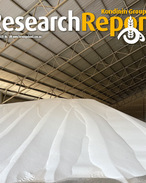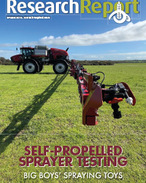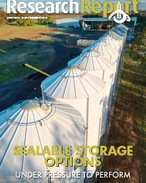This article is 8 years old. Images might not display.
The report showed cropping overtook beef and cattle as the most valuable agricultural export sector in 2016/17, thanks to a 49 per cent increase in production more than offsetting low export prices for wheat and coarse grains.
Wheat exports to India rose by 920% after tariffs were reduced, while Indonesia, Philippines and Vietnam all bought significantly more in 2016/17.
Volumes of canola increased by 85% with strong European demand also giving a boost to prices, and legume volumes were also up 85% over the past 12 months with subcontinent markets buying up the extra volume.
On the flip side, beef and cattle export values declined by $1.8 billion, as supply tightened and competition from USA and Brazil heated up in Asian markets. The value of dairy exports also fell by 1.3% over the year, with production declining across Australia.
General manager agribusiness for Rural Bank, Andrew Smith, said that while the growth of this year is unlikely to be repeated in 2017/18, the long term outlook remains positive.
“This year’s value increase in cropping was largely to do with exceptional seasonal conditions that we haven’t seen a repeat of this year. However, the long term trend of expanding international markets will continue to drive value in Australia’s exports,” Mr Smith said.
“Australia continues to capitalise on the growing diversity of Asian demand. Where one commodity sees a decline, another makes up for it, a pattern that has helped mitigate declines in dairy, horticulture and cattle and beef,” he said.
While China reduced imports of Australian cotton, India took up the slack, increasing its intake of Aussie cotton by a staggering 569% or $326 million. Bangladesh imports of Australian cotton also increased by 270%.
Despite reducing its intake of Australian cotton, China renewed its appetite for Australian wool, which supported a 14% increase in the value of the commodity exported. This growth is expected to continue for the foreseeable future as Chinese demand for fine wool rises.
Mr Smith said cotton should continue its upward trajectory in the coming year as even more land is utilised for production and demand for wool remains strong.
“While we expect the value of beef exports to be flat over the short term, over the medium term we see a slight uptick demand from Asia grows. Demand for dairy products is starting to increase, providing our dairy farmers some optimism for the future,” Mr Smith said.
New South Wales increased its agri export value by 17.6% on the back of strong cotton and grain exports, while Victoria (4.7%), Queensland (9.6%), South Australia (5.4%) and Western Australia (8.4%) all experienced solid overall gains.
However, Tasmania and the Northern Territory both saw declines in its export values due to the decrease in value of cattle and beef exports.























